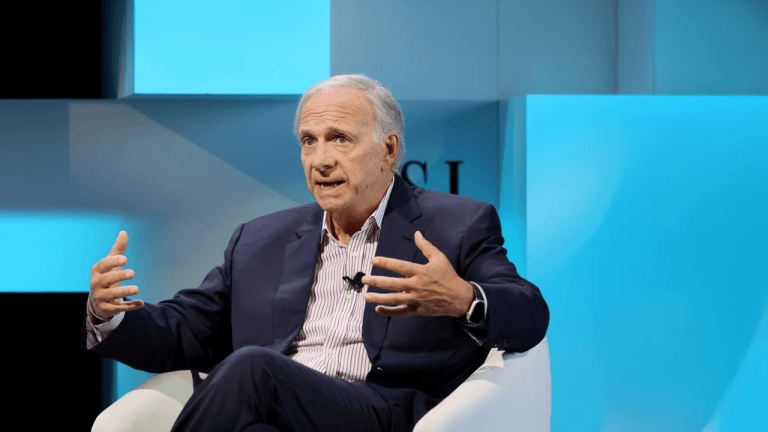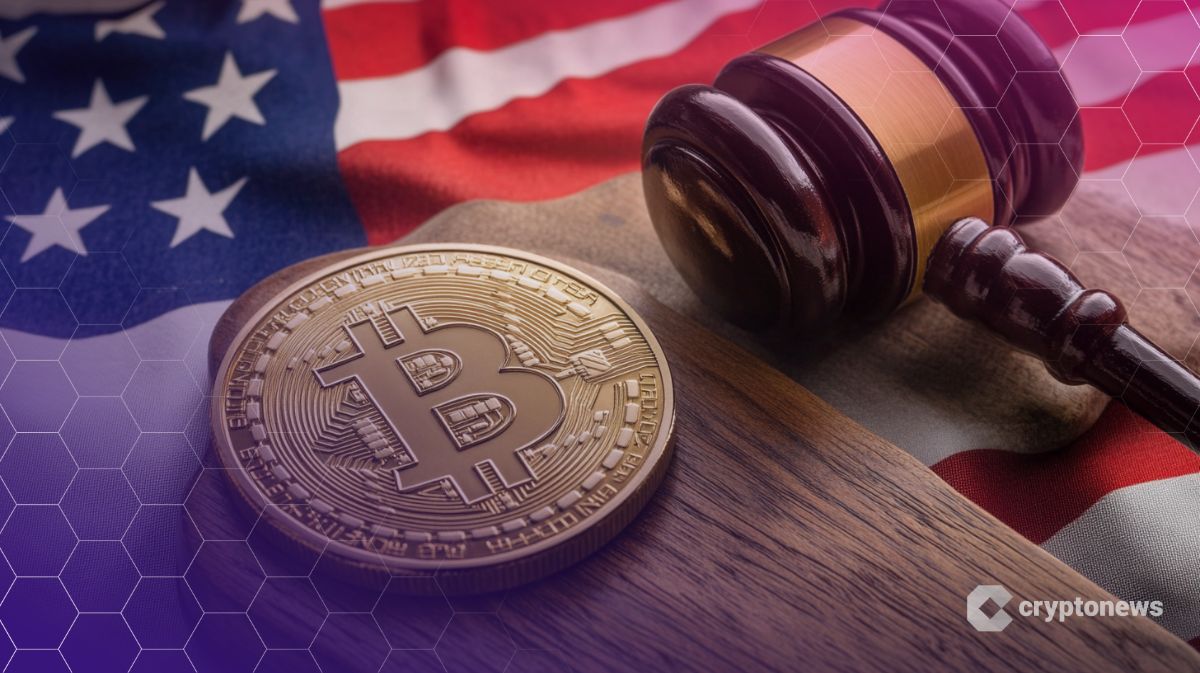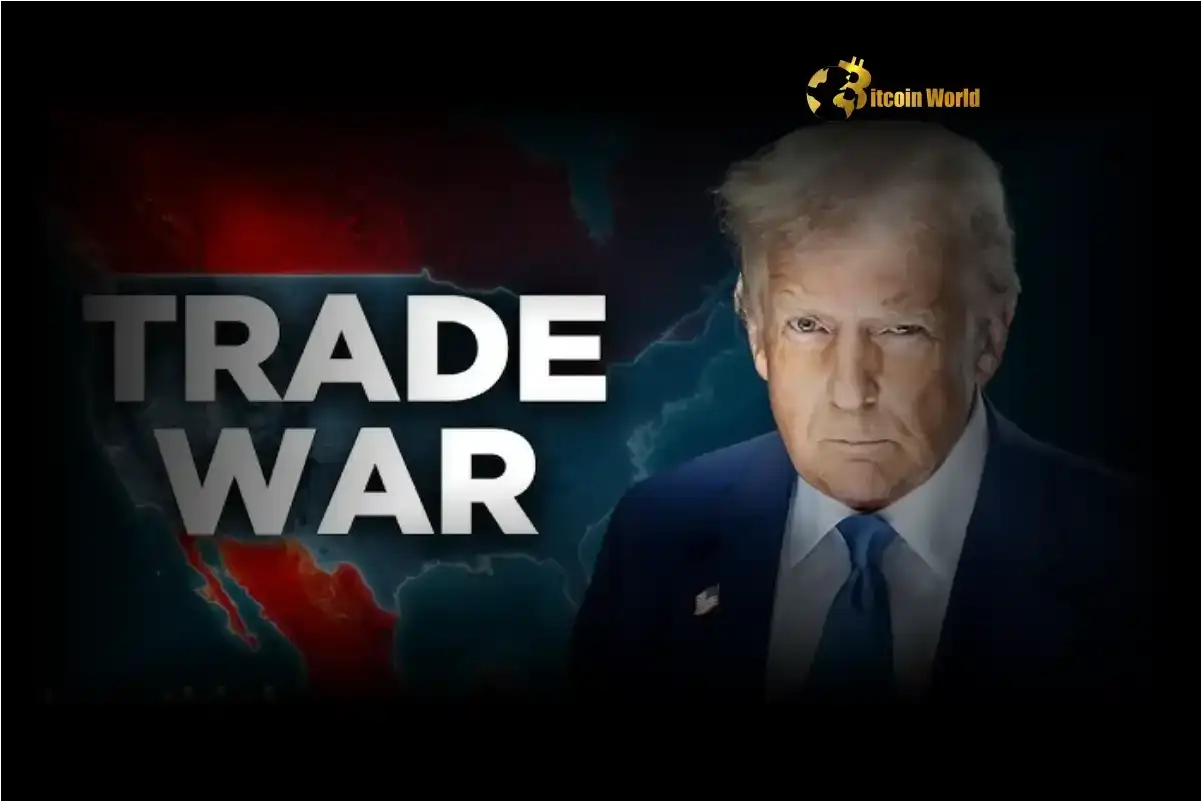Get ready for a potential earthquake in global trade! Former U.S. President Donald Trump has ignited market anxieties by announcing a bold plan: a flat 10% tariff on all imports into the United States. For cryptocurrency enthusiasts and investors closely monitoring global economic shifts, this news could signal significant market volatility and shifts in economic power. Let’s dive into what this dramatic announcement means and what it could trigger.
Understanding Trump’s Sweeping Tariffs on Imports
In a move that has sent ripples through international markets, Donald Trump has declared his intention to impose a 10% tariff on all goods entering the United States. This isn’t just targeted tariffs on specific countries or sectors; this is a blanket approach affecting nearly every imported product. He further elaborated that nations deemed to have unfair trade practices could face even steeper tariff rates. According to reports from the Wall Street Journal, Trump intends to formalize this policy through an executive order focused on reciprocal tariffs. His rationale? To rejuvenate American industry, bring back jobs, and restore the nation’s wealth. But what are the nuts and bolts of this proposal?
- Universal Application: Unlike targeted tariffs seen in the past, this 10% levy applies across the board to all imports, regardless of origin.
- Reciprocal Tariffs on the Horizon: Trump mentioned an upcoming executive order focused on ‘reciprocal tariffs,’ suggesting a strategy to match tariffs imposed by other countries on U.S. goods.
- ‘Poor Trade Records’ Penalty: Countries perceived as having ‘poor trade records’ could face tariffs exceeding the base 10%, though specifics remain unclear.
- Job Creation and Economic Revival: The stated goal is to incentivize domestic production, bringing manufacturing back to the U.S. and boosting employment.
Could Trump’s Policy Ignite a Global Trade War?
The immediate question on everyone’s mind is: will this trigger a full-blown trade war? Imposing tariffs on all imports is an aggressive move that historically has provoked retaliatory measures from trading partners. When one country imposes tariffs, others often respond in kind, escalating into a cycle of tariffs and counter-tariffs. This tit-for-tat scenario can significantly disrupt global trade flows and negatively impact economies worldwide. Consider these potential repercussions:
- Retaliation from Trading Partners: Major trading partners like China, the European Union, and others are highly likely to respond with their own tariffs on U.S. exports.
- Supply Chain Disruptions: Businesses relying on international supply chains could face higher costs and logistical challenges, potentially leading to production delays and increased consumer prices.
- Reduced Global Trade Volume: Increased tariffs act as a tax on international trade, making goods more expensive and potentially reducing the overall volume of goods traded globally.
- Economic Uncertainty: The uncertainty surrounding trade wars can dampen investor confidence, leading to market volatility and slower economic growth.
The last time the U.S. engaged in significant tariff disputes, we saw sectors like agriculture and manufacturing heavily impacted. Farmers faced reduced export markets, and some industries experienced increased input costs. A widespread 10% tariff could amplify these issues across a much broader range of sectors.
Analyzing the Impact on the US Economy
Trump argues these tariffs will revitalize the US economy, but economists are deeply divided on the potential outcomes. While proponents suggest it could incentivize domestic production and create jobs, critics warn of significant negative consequences. Let’s weigh both sides:
Potential Benefits:
- Domestic Job Creation: Tariffs could make imported goods more expensive, theoretically encouraging businesses to manufacture goods within the U.S., leading to job growth in some sectors.
- Boost to Domestic Industries: Certain U.S. industries might see a competitive advantage as imported goods become pricier, potentially increasing their market share and profitability.
- Increased Government Revenue: Tariffs generate revenue for the government, which could be used to fund other programs or reduce the national debt (though this is often offset by economic losses elsewhere).
Potential Challenges:
- Increased Consumer Prices: Tariffs are ultimately paid by consumers through higher prices for imported goods and even domestically produced goods as supply chains are affected. This can lead to inflation and reduced purchasing power.
- Reduced Business Competitiveness: Businesses that rely on imported components or materials will face higher costs, potentially making them less competitive in global markets. This can harm export-oriented industries.
- Damage to Export Markets: Retaliatory tariffs from other countries can significantly harm U.S. exporters, particularly in sectors like agriculture and manufacturing, leading to job losses and reduced income in these areas.
- Economic Slowdown: The overall economic uncertainty and disruptions caused by trade wars can lead to slower economic growth, reduced investment, and potentially even recessionary pressures.
The complexity of the modern US economy means the impact of such broad tariffs is difficult to predict with certainty. Economic models offer varying projections, but the real-world effects often depend on numerous factors and behavioral responses.
How Do Tariffs Connect to Cryptocurrency and Financial Markets?
You might be wondering, what does this all mean for cryptocurrency and broader financial markets? While tariffs are a trade policy issue, they have significant ripple effects into financial markets, including the crypto space.
- Market Volatility: Trade wars and tariff announcements inject uncertainty into the market, often leading to increased volatility in stock markets, currency exchange rates, and potentially cryptocurrency markets as well. Investors tend to become risk-averse during times of trade tensions.
- Inflationary Pressures: As tariffs can lead to higher consumer prices, they contribute to inflationary pressures. In inflationary environments, assets like Bitcoin are sometimes viewed as a hedge against inflation, potentially increasing demand.
- Currency Fluctuations: Trade imbalances and tariff disputes can influence currency exchange rates. A strong dollar, for example, can make U.S. exports more expensive and imports cheaper (excluding tariffs), while a weaker dollar can have the opposite effect. These currency shifts can indirectly impact global liquidity and investor sentiment, affecting crypto markets.
- Safe-Haven Assets: In times of economic uncertainty driven by trade wars, investors may seek safe-haven assets. While the safe-haven status of cryptocurrencies like Bitcoin is still debated, increased economic instability could lead some investors to allocate funds to crypto as a diversification strategy.
It’s crucial for cryptocurrency investors to stay informed about macroeconomic developments like tariff policies, as they can indirectly but significantly influence market sentiment and asset valuations.
Navigating the Tariff Terrain: Key Takeaways
Trump’s proposed 10% tariff on all imports is a potentially seismic shift in global trade policy. Here are some key takeaways to consider:
- Significant Disruption Potential: These tariffs are not minor adjustments; they represent a major overhaul of U.S. trade policy with the potential to disrupt global trade flows and supply chains significantly.
- Uncertain Economic Outcomes: The actual economic impact on the U.S. and the world is uncertain and hotly debated. Both positive and negative scenarios are plausible, and the long-term effects are hard to predict.
- Increased Market Volatility Expected: Expect increased volatility across financial markets, including potential ripples into the cryptocurrency space, as the situation unfolds and retaliatory measures are considered.
- Stay Informed and Adaptable: For investors and businesses, staying informed about trade policy developments and being adaptable to changing market conditions will be crucial in navigating this evolving landscape.
The announcement of widespread tariffs marks a critical juncture in international trade relations. Whether it leads to a revitalized American economy or triggers a damaging global trade war remains to be seen. One thing is clear: the world is watching, and the economic implications could be far-reaching.
To learn more about the latest global economic trends, explore our article on key developments shaping global market dynamics.
News – BitcoinWorld – Read More










